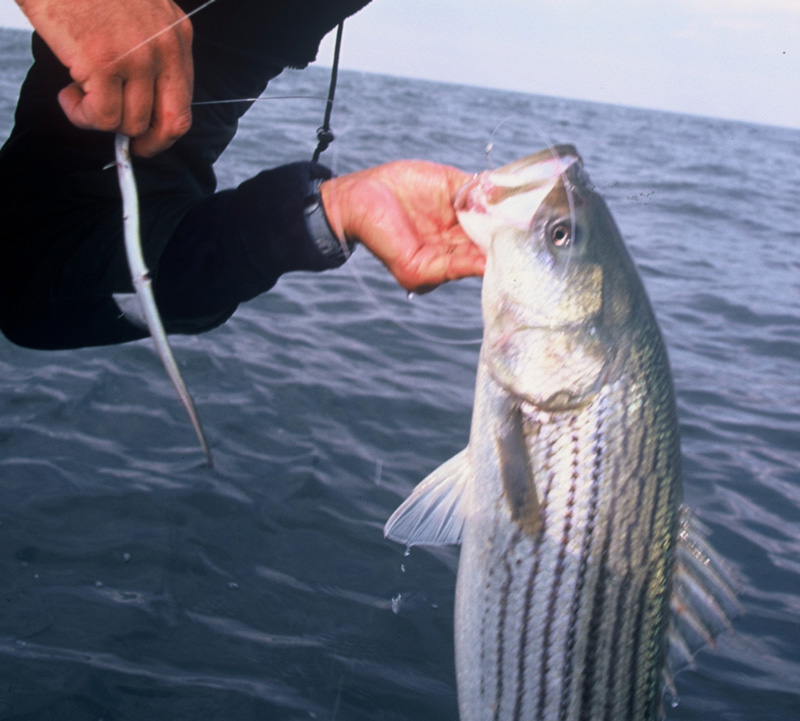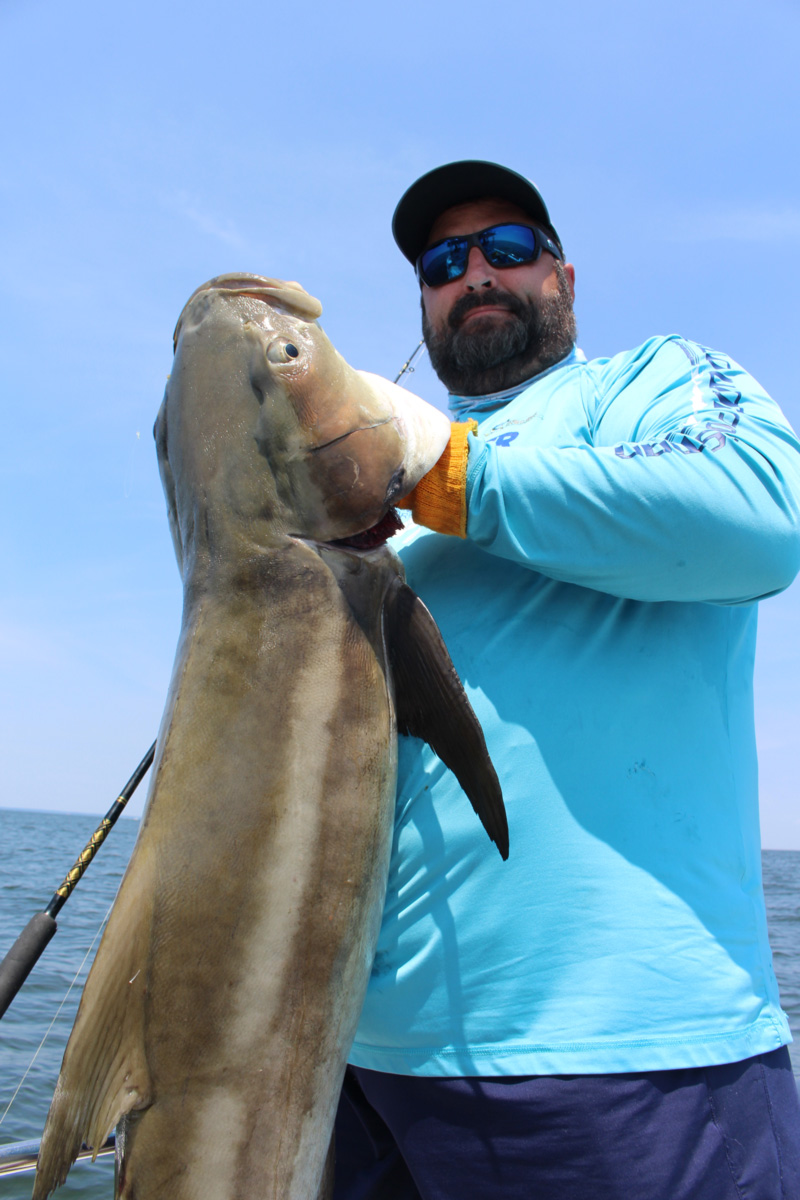What’s the wiggliest, slimiest, feistiest, and perhaps grossest live bait around? Why, eels of course. A live eel will wrap itself around your wrist, drip stinky goo on your clothing, and slither into that crevasse between the transom and the deck. It will tie itself into knots while turning your leaders into hopeless snarls, come free of your hook for no apparent reason, and mysteriously live through repeated casts and bluefish attacks only to die for no apparent reason — until you strip it off the hook and toss it over the side, only to watch as it mysteriously comes back to life and swims away. Eeling is, without a doubt, one of the most frustrating ways of live-bait fishing. It also happens to be one of the most effective.

Any number of species are attracted to eels, with local stand-outs being rockfish (striped bass) and cobia. Both are suckers for these slithering snake-like critters, and at times, will hit an eel faster than they’ll take any other offering. So when the eeling bite gets good, it’s time to put up with all the aforementioned hassles and deal with the slime factor.
How to Keep Eels Alive
Keeping those snot-balls alive and kicking can be frustration. They’ll live in a constantly circulating livewell, but otherwise, require constant attention. The key thing is to allow them to drain while keeping them cool. If contained without the ability to drain, they will literally smother in their own slime. And keeping them cool sends them into semi-hibernation, which not only extends their lifespan but also makes them much easier to handle when putting them on a hook.
Note that eels don't need to be in water to live, but they do need to stay moist. To keep them wet, cool, and happy, get a foot-long or bigger Tupperwear container about three or four inches tall. An old plastic pretzel barrel works well, too. Poke 15 to 20 holes in it in the bottom, sides, and top. Be sure to poke from the inside out, so there aren't any jagged bits of plastic on the inside where the eels will be wriggling. Then, put ice in a cooler, lay a towel over the ice, and put down the eel container. As ice melts be sure to drain the cooler so the eels aren't swimming in melt-off water. Also, if they’ll be in there overnight or for an extended period of time, prop open the top of the cooler a half-inch or so to let in fresh air now and then.
Kept this way, eels will live for several days. But when you remove the container from the cooler to bait up, get out one eel then put the container right back on ice — if they heat up too fast in the sun they'll die off. Once you get your eel on the hook and cast, it’ll warm up in moments and start swimming.
How to Rig Live Eels
Rule number-one: don’t bother trying to hold a wriggling eel with your bare hands. Squeeze it tightly enough to get a grip, and you’ll kill it. Instead, keep a roll of paper towels or a dedicated eel rag handy. Dry parts will stick to the eel and give you a purchase.

Some people like to slide the hook between the eel’s jaw and then go down through the lower jaw or up through the top jaw. Others push the point in through the outside of the lower jaw and out through the top jaw. In my experience, neither works very well and eels will disappear from your hook for no apparent reason with startling regularity. Pick your poison. The take-away here, however, is that when you’re fishing eels if you haven’t had a hit in 15 or 20 minutes, check your baits. Half of them may well be missing.
The appropriate hook size, leader size, and terminal tackle depends on the target species. That said, there’s one thing to remember: thick hooks will sometime split the eel’s jaw, and the bait’s then ruined. For this reason, I always go with the thinnest hooks possible when eeling.
One of the most aggravating things about eeling is that once on the hook, these creatures will sometimes form themselves into a wriggling mass—and as they do so, the leader tied to the end of the hook will follow. The net result is a tangle in your leader of epic proportions. Sometimes you’ll reel an eel up to discover a tennis ball-sized knot of bait, line, swivel, and sinker that requires cutting and re-rigging. This is simply a part of eeling. They seem to do this most often when suspended from the end of your line, so you can minimize these tangle-disasters, however, by minimizing the time an eel is out of the water. The moment you get a hook into an eel, deploy it.
Eels can also be rigged with an egg sinker just in front of the hook. We demo this method in our How to Fish for Striped Bass at the Chesapeake Bay Bridges video, so check it out:
When moving from one area to another or if for whatever reason you need to keep an eel out of the water for more than a moment, the best move is to drop it into a bucket with a half-inch or so of water in the bottom. Put the rod into a holder, and leave enough tension on the line that the eel’s head is lifted just a hair off the bottom of the bucket. Dropping in a handful of ice to keep the eel chillaxed a bit helps. Sometimes they’ll still form the dreaded eel knot, but it’ll happen less often than if you allow them to swim in the bucket or wriggle on the deck.
Wow—eeling is a massive PITA, isn’t it? Yup. But it’s worth the hassle. Because as any dedicated eeler can tell you, there are times and places where no live bait nor any lure can hold a candle to these crazy critters. And when that’s the case, it’s time to get slimed.